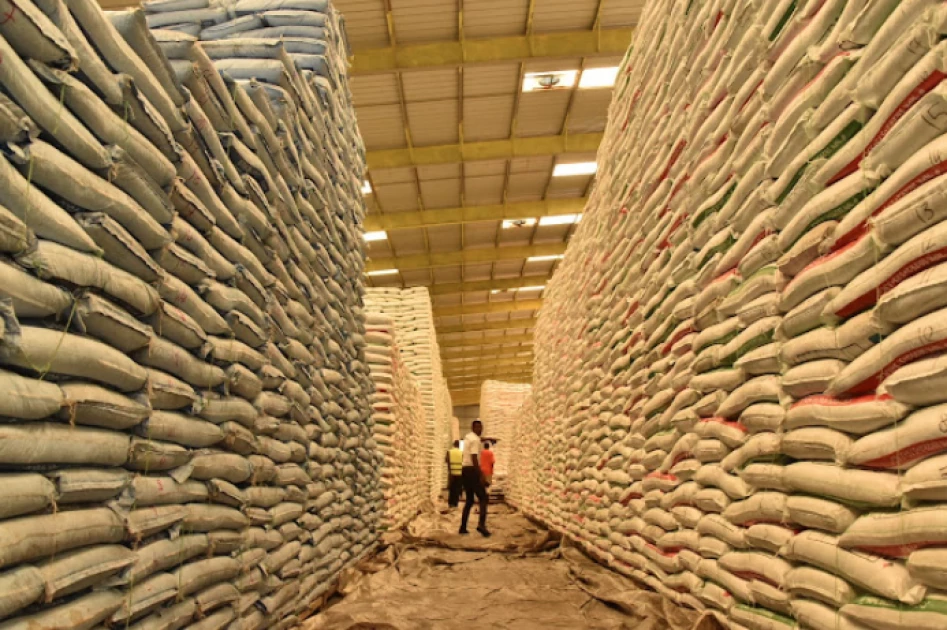The government has ramped up preparations for the long rains planting season by procuring 5.9 million bags of fertiliser to support farmers across the country.
The initiative aims to enhance food production and ensure timely access to essential farm inputs.
Agriculture Principal Secretary Paul Rono confirmed that more than two million bags have already been distributed to 179 National Cereals and Produce Board (NCPB) depots and cooperatives.
The distribution is primarily focused on counties currently in the planting phase, including Bomet, Narok, Kisii, Nyamira, Bungoma, and parts of Kericho and Nakuru.
“We encourage farmers to take advantage of the rains which have already begun to start planting,” said PS Rono in a phone interview with The Star.
To improve accessibility, the ministry is working closely with county governments to open additional last-mile stores, ensuring that farmers receive not just fertiliser but also essential farm inputs like seeds.
NCPB spokesperson Titus Maiyo assured farmers that the fertiliser distribution process is efficient and ongoing, urging those with e-voucher messages to collect their supplies from the nearest depots.
“We continue to receive more fertiliser stocks from suppliers, and as farmers pick up their orders, the stocks are being replenished. This will continue until the end of the long rains season,” Maiyo stated.
He also confirmed that the available fertilisers are specifically formulated for planting and cater to various crop needs.
According to Kenya Meteorological Department Director David Gikungu, the expected rainfall in the western part of the country will significantly boost agricultural and livestock production, improving food availability and nutrition levels.
However, he warned that excessive rainfall could lead to soil erosion, nutrient leaching, and flooding, which might negatively impact crop and pasture growth.
Gikungu also highlighted potential threats from pest and disease outbreaks due to increased humidity and warmer temperatures, urging farmers to implement preventive measures.
“Pre- and post-harvest losses could also occur in the Western region, and there may be an increase in weed growth, which could drive up production costs,” he noted.
Additionally, he warned that livestock diseases could emerge in Central, Rift Valley, Eastern, Northeastern, and Coastal regions, potentially affecting agricultural productivity.
Farmers in Arid and Semi-Arid Lands (ASALs) may face reduced pasture and water shortages, leading to worsening livestock conditions and increased fatalities.
To mitigate these risks, the Meteorological Department urged the Ministry of Agriculture to adopt livestock offtake strategies and intensify disease prevention and control through routine surveillance.
The government’s commitment to providing subsidized fertiliser aligns with broader efforts to enhance food security and stabilise agricultural productivity.
With timely rains and improved access to farm inputs, farmers are being encouraged to maximize production and mitigate potential challenges posed by erratic weather conditions.
This strategic intervention is expected to strengthen Kenya’s agricultural sector, ensuring better yields, improved livelihoods, and reduced dependence on food imports in the coming months.






